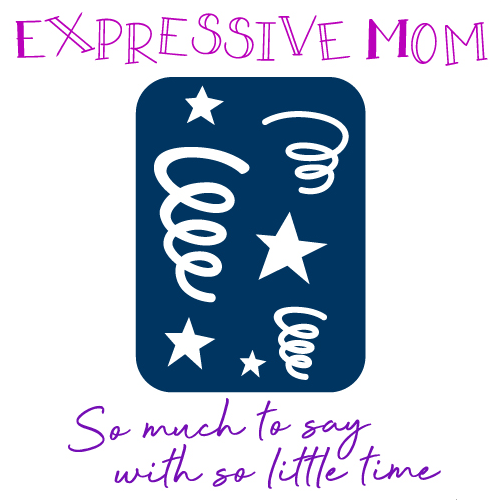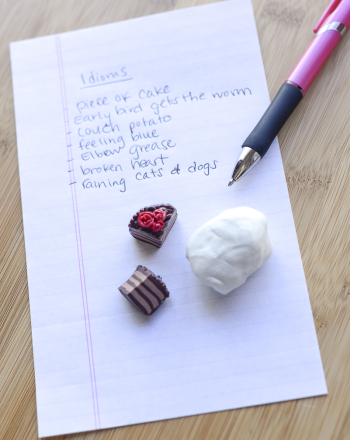Make Clay Idioms a “Piece of Cake”!
by Education.com
“That test was a piece of cake!” “It’s clean as a whistle!” Idioms, well-known words or phrases that have figurative meanings different from their literal ones, can be found everywhere from the books we read to our everyday conversations. That’s why it’s important that your child understands the figure of speech he’s using. Luckily, an idiom is more than just an expression. It is also the inspiration for this fun, hands-on art activity!
In this activity, your child will use modeling clay to represent the literal meaning of an idiom which can then be compared to how we use the phrase when we talk or write. To complete this activity, your child will brainstorm all the idioms he knows and think creatively about how to represent his favorite one using clay. Above all, he’ll discover that practicing English grammar can be fun!
What You Need:
Sheet of paper
Pencil
Modeling clay (can be found at any craft store)
Internet access (only if you need help brainstorming)
What You Do:
1. Work together with your child to write down as many idioms as you two can think of, or if you need help, look up a few online to get you started.
2. Have your child pick the idiom he wants to make into a clay creation. Keep in mind that the idioms that will work best are the ones that involve people or things. For example, “hold your horses,” “don’t let the cat out of the bag,” “all in the same boat,” “pick up your ears,” “bite your tongue,” “when pigs fly,” and “you are what you eat” would all be easy to make into a clay model.
3. Give your child a few minutes to think about how he will design his piece of art. He may want to draw it before he gets started so that he has a plan. For example, if he’s making “a piece of cake,” what color clay will he use; will it be sitting on a plate or standing alone?
4. Now for the fun part! Have your child create his idiom using the modeling clay. Give him as much time as he needs, and encourage him to focus on the phrase.
5. When he’s finished, depending on the type of clay that you use, you may be able to heat the clay in the oven or sit it out to dry in order to get a finished piece. While your clay is baking or drying, use the time to talk to your child about what he just made. Can he think of examples of how “a piece of cake” (or whichever phrase he chose) is used in everyday language? How is that different from the actual clay piece of cake that he has made?
6. This activity is especially useful for kinesthetic learners, or those who learn best by doing hands-on activities. Your child will gain a basic understanding of idioms without even realizing that he’s been given a grammar lesson!




Connect With Me !